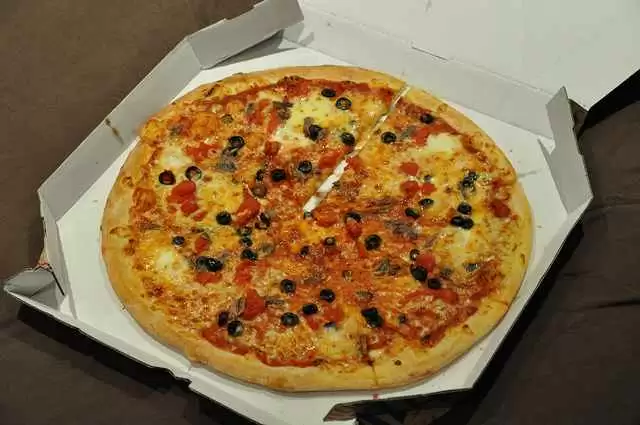
Celiac.com 07/22/2017 - In 1978 Virginia Slims' magazine advertising spouted "You've Come A Long Way Baby". Well, in 2011 "WE" celiac/DH people can express those same words when talking about how far we have travelled since I was diagnosed as a brittle celiac/DH person 16 years ago. If the people with peanut allergies can become well known, so can celiac people!
DID YOU KNOW: That 16 years ago gluten free foods were difficult to find, and upon finding the small frost-bitten white-gummy loaf of bread, which was even more expensive than it is today, one had to scrape it off the roof of your mouth with your tongue and chew!
Celiac.com Sponsor (A12):
I also remember trying to make a gluten free loaf of bread in our bread maker and having it turn out smaller than when it went in. My husband had to get it out of the container with a screw driver! Now we buy a bread mix which is gluten free, good, and when sliced thin tastes like the real thing!
You are the consumer. You have a right to ask questions. Don't go back to a restaurant or store that has "claimed" to have gluten free food or baking if you have suffered with an outbreak of dermatitis herpetiformis or abdominal pain after eating their food. I find that, with dermatitis herpetiformis, I know within the first 24 hours if I have ingested gluten. I was unaware, as a new celiac, that "Wheat Free" and "Gluten Free" do not mean the same thing. I now watch for the logo on boxes; the picture of wheat with a line crossing it out, meaning there is definitely no gluten in that product.
I wanted to have my very first '"DID YOU KNOW" Column to be centered around my favorite subject - food! I am hoping that readers will feel free to write to me at the 'Journal of Gluten Sensitivity' and offer your suggestions with regard to products you have come across in your search for "yummy" gluten free foods. I would also welcome hearing about restaurants and chain grocery stores that you want to recommend to fellow celiac people. Networking is the best way to glean information.
I also appreciate being corrected. When you provide me with information we all benefit. I want to hear from you, care of the magazine, about titles you would like to see covered. I have files on "The FDA'S Labeling Proposal", " current statistics", "cross-contamination" and web sites that won't grab you and suck you under}. I also have files on "dermatitis herpetiformis - helpful information I learned the hard way", " information about connective tissue disease", "dental care", "myths and facts"," current news/current events"," vitamins and minerals for the celiac", "other diseases that can affect the person with celiac disease", and my favorite, "names of gluten free products that taste like the real thing". They are out there. { And I don't get a kick-back" on products I tell you are too good to pass up!}
DID YOU KNOW? That Domino's Pizza were not the first Pizza Chain to advertise that they have a gluten free pizza crust? As far back as March 12, 2008, according to the Pizza Pizza www.pizzapizza.ca web site, they were the first Canadian pizza chain that advertised that their 50 Greater Toronto area restaurant locations offered a gluten free crust and numerous gluten free toppings as a pilot project. Big problem! As of November 6, 2012 they opened their 13th location in Montreal. Too far away for dine-in, and too far for their take-out service!
Domino's Pizza's based in Ann Arbor, Michigan, indicated it was the first national delivery chain to provide the choice of gluten free crusts with its pizzas. According to the PMQ Pizza Magazine, Pizza Hut, part of Yum! Brands (YUM) was the largest pizza seller in the U.S., followed by Domino's and Papa John's (PZA) at number three. All told, the magazine says pizza in 2010 was a 35 billion business in the 50 states. BUT, "Did You Know" that Domino's indicate that "Gluten avoiders should be aware that the crust will be prepared in the same kitchen as the regular gluten-containing crusts, so some risk of gluten exposure will remain."
Even so, the NFCA said it was happy to have Domino's "on board". As of Friday, May 12, 2012 Domino's pizza was still waiting for the U.S. Food and Drug Administration to resolve the issue of safe threshold levels of gluten for food labeling.
"Happy Joe's Pizza", chain-store pizza restaurants have a small size gluten-free pizza crust that is very good according to my U.S. relatives who are also gluten intolerant.
The ACDA (American Celiac Disease Alliance) firmly believes that the standard adopted by the FDA must be substantiated by evidence-based research, with limits established through double-blind, randomized trials. Research conducted in 2007 supports setting the gluten-free standard at the proposed level. There are few studies assessing toxicity and safety of gluten exposure and none published thus far which demonstrate safe levels for individuals with celiac disease. [ACDA comments on FDA's labeling proposal.]
Does this make sense to you? We should be aware if the crust will be prepared in the same kitchen as the regular gluten-containing crusts, so some risk of gluten exposure will remain. This reminds me of ordering a Caesar salad, minus the croutons, in a well-known restaurant chain. After considerable questioning I found out that the waiter just took the croutons out of the Caesar salad! I am extremely sensitive to just a few crumbs of gluten. What is the use of our family buying two toasters to avoid cross-contamination only to have a waiter scoop out the croutons before serving me?
"Oats serve as a prime example in support of the FDA position in the U.S.A." {ACDA comments on the FDA's labeling proposal}. "Oats does not contain the gliadin protein and should be safe for celiac consumers. However, grain standards for the United States allow a set percentage of foreign grains to be present in packages of single name grains. By definition, then, oats may contain up to 25 percent of wild oats and other grains for which standards have been established under the United States Grain Standards Act. Research has shown, and the FDA acknowledges, that regular oats pose a risk to celiac consumers due to cross-contamination."
I was blown away when I read on the American Celiac Disease Alliance site that given the manner in which grain crops are rotated in the U.S., it is likely that similar contamination issues will arise with regard to other inherently gluten free grains. In fact, a recent study found that among 22 samples of inherently gluten-free grains, seeds and flour, seven (22%) exceeded the proposed FDA standard of
Additionally, the FDA itself has found that "qualifying language is confusing to consumers". {You can say that again!} "This approach eliminates the need for consumers to differentiate among products that are inherently gluten-free foods and those which are not. It will also eliminate the use of other statements on products such as 'made with gluten-free ingredients,' which can be misleading. Finally, it will, in our view, simplify the education process for patients and the public at large." (ACDA comments on FDA labeling proposal)
Cross-Contamination will be attacked in a later column.
The ACDA implored the FDA to consider the following: "It takes an individual, on average, six years of being ill, of bouncing from doctor to doctor before being properly diagnosed with celiac disease. Gluten-free foods do not undergo years of safety testing before going on the market like medications. Each and every day, celiac consumers are placed at risk when trying to determine if the foods intended to maintain their health are safe. They have only the clarity and accuracy of the labeling on which to rely. It is a heavy burden, but one that will be eased dramatically with the completion of this rule making."
An excellent web site entitled 'The Celiac Scene, Guides for the Gluten Free' has a seemingly limitless number of chain restaurants throughout Canada and the United States that have a gluten free menu. Some of their gluten free menus are small, but growing. The site even has maps that are updated regularly. You can press on the MAP Icon to find out where to locate the celiac endorsed restaurants and chains throughout North America. I was really happy to find the "Celiac Scene" web site! It is owned, operated and maintained by people with celiac disease themselves. Still, it states: "Consider them a guide, not a guarantee." This seems reasonable given the number of restaurant chains that are listed and the recalls that happen regularly.
In December 2011 there was a recall of the Metro Grocers' irresistible gluten free Honey-Nut O's cereal and Apple Cinnamon O's cereal because of gluten.
On a happier note Loblaws and President's choice have produced a new "Recipes to Riches" cookie product. The product labeling indicates that the product is gluten free. To assure this claim, the product has been made under strict processing conditions. Every precaution has been taken to ensure that no gluten containing ingredients are included and all possible cross contamination is eliminated. Another great boxed mix is King Arthur Scones and cookie Mix, available in the United States and Canada. Follow the directions and they will be gone the first day! King Arthur also has a box flour, sold in the U.S.A. and Canada. You can substitute this flour in your regular recipes, use smaller pans, reduce your cooking time and you won't be digging them out of your muffin tins!
DID YOU KNOW? That Betty Crocker now has a gluten free Bisquick? You can make pancakes, waffles, pizza base, meat pie topping, scones, and I even tried some muffins!
Fast-food restaurants began to offer gluten-free foods as part of their regular menus as early as 2006. Each restaurant offers gluten free food based on their own criteria as there is no universal standard. {"What Fast Foods Are Gluten Free? Ehow.com }
NOTE: "based on their own criteria as there is no universal standard". McDonald's provides food-allergy information on its website (see link in Resources) as do many other fast-food restaurants. The In-N-Out chain is the most gluten-free friendly fast-food restaurant, while McDonald's has the least number of choices that are gluten-free. Other fast food restaurants also vary in the number of gluten-free foods they offer. The Olive Garden has a separate menu for the celiac but it is slim pickings. The majority of foods offered at fast-food restaurants that are gluten-free consist of salads, ice cream products and some of the "side" dishes such as those made from potatoes. Keep in mind the "Buyer Beware" rule still applies. French fries are often coated with flour, like the wonderful Costco and McDonald's French fries, some ice creams even contain flour. If you don't ask, they won't tell you!
Even gluten free food can vary by fast food restaurant; for example, while french fries at Sonic are gluten-free, those from McDonald's are not. You are the checker. Many of them have a black book or a binder with lists of ingredients for the products they provide. To be safe, check the allergy information first.
THE CELIAC SCENE also has a sheet on " How to start a conversation on celiac friendly dining". It is really good, though I cannot imagine myself asking my waiter or server "Did you wash your hands/change gloves/change aprons before or in between preparing regular food?" We should, you know, and we have every right to question our server and the kitchen staff. Remember, gluten is poison to us and we can become very ill ingesting it. Questions like "Could the finished product become contaminated with gluten while waiting to be served?" and "How do servers confirm with the kitchen that the order they are collecting from them is gluten-free?" and "How do servers confirm with the customer that the order they are providing is gluten free?" and "Will my food be prepared in an area separate from the regular flow of the kitchen?" and "How do you ensure that all utensils used in preparing my food are free from traces of gluten?" There are a lot more questions on The Celiac Scene Guide for the Gluten Free, and if I can find it on the world wide web anyone can!
DID YOU KNOW?: With regard to Domino's gluten free pizza, Yahoo Finance has a web site where you get the real story. The crust is appropriate for those with MILD gluten sensitivity, "But it is not recommended for people who have celiac disease." The NFCA says that one out of every 133 Americans has celiac disease or about 3 million Americans in all. Another 18 million have a less serious "sensitivity" to gluten, the organization says. Gluten is found in wheat, barley and rye. Celiac disease is a condition in which the immune system responds to gluten intake by damaging the small intestine. That can inhibit the absorption of various nutrients.
GLUTEN AVOIDERS should be aware that the crust will be prepared in the same kitchen as the regular gluten-containing crusts, so some risk of gluten exposure will remain, the company said. Even so, the NFCA said it was happy to have Domino's on board. They may be "on board" but according to me they are going to sink if they do not make some rapid changes. I don't want to write any more about Domino's Pizza, and I'm sure you don't want to hear any more about it unless some big changes are made.
Next time I'll write about excellent recipe books for the celiac. My cupboard is full! And a reminder from me, those lovely gluten free cakes on the glass covered bakery shelves - I urge you to ask how long they have been there. Some of those cakes, in certain bakeries, have been sitting in that case for a month, and the server is just using a piece of wax coated paper to box up bakery products, while passing them over the celiac baking. How do I know? My husband and I did a little checking during the summer and the lovely little banana sponge bomb was on that bakery shelf for a month.. Ick!
Cheers! Until next time.









Recommended Comments
There are no comments to display.
Create an account or sign in to comment
You need to be a member in order to leave a comment
Create an account
Sign up for a new account in our community. It's easy!
Register a new accountSign in
Already have an account? Sign in here.
Sign In Now